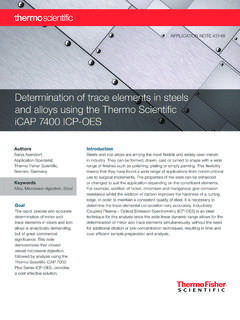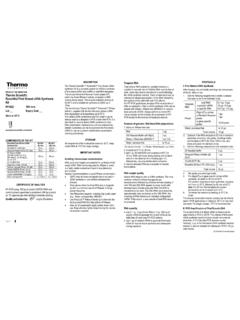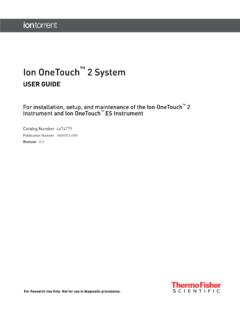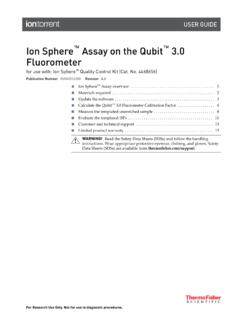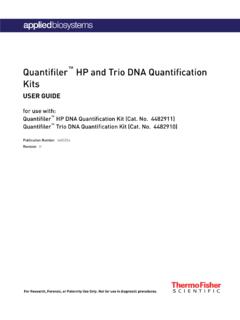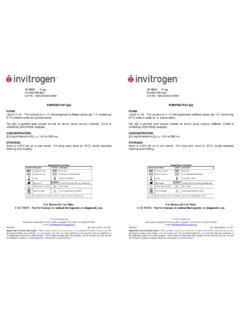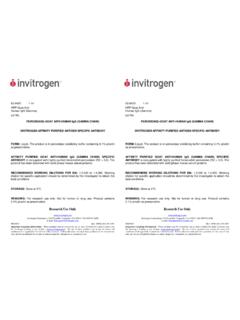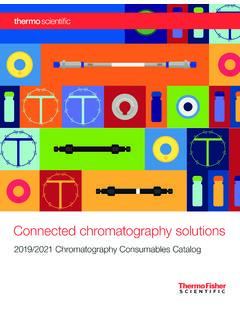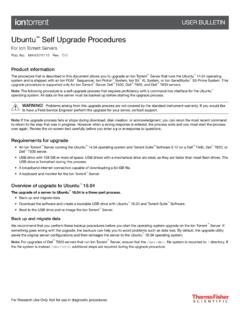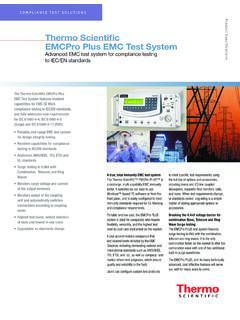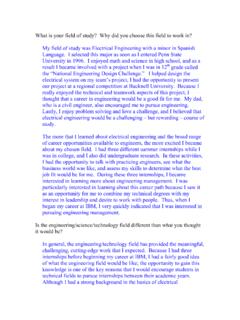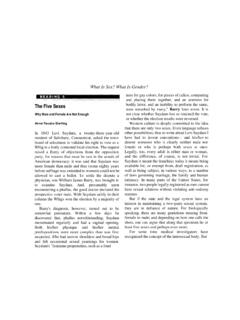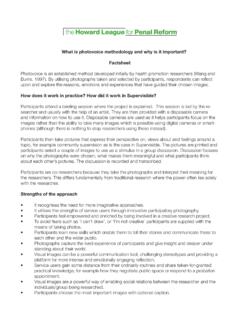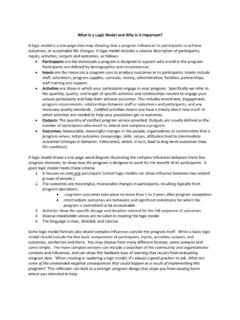Transcription of Why and How to Matrix Spike - Thermo Fisher Scientific
1 Why and How to Matrix Spike Matrix Spiking is a technique that is used to evaluate the performance of an analytical procedure when testing a specific sample ( Matrix ) type. In other words, a Matrix Spike test helps answer the question Are we getting good (valid) results when we use this method to test this sample or this type of sample? A good Matrix Spike result increases our confidence in the accuracy and validity of the sample test results. A Matrix Spike (MS) is generated by adding a known amount (a Spike ) of analyte to a sample, testing the spiked sample, and determining if we have recovered the amount that we added. In practice, two portions of the sample are prepared for testing. In the Matrix Spike portion, we add a known amount of standard (to increase the concentration by a known amount). When we test the sample and then the Matrix Spike , the Matrix Spike result should be higher by that known amount added. If the analytical procedure is not working well for our sample, the Matrix Spike result will be higher or lower than we are expecting.
2 A Spiking Solution is a standard that is chosen for preparing a Matrix Spike ; the concentration of the analyte in the spiking solution is usually 50 -100 times higher than the concentration found in the unspiked sample. This concentration is chosen to ensure that the Spike does not significantly change the sample volume. This simplifies the calculations and avoids introducing unknown effects from dilution of the Matrix . The Spike should not increase the sample volume by more than 5%. Otherwise, it must be taken into account. How to choose the desired Matrix Spike concentration For routine quality control purposes, it is recommended to prepare and analyze one Matrix Spike sample for each batch of 10 or 20 samples. In this case, the Spike concentration should be chosen to fall in the middle of the analytical method range. If we want to determine method performance on a specific sample, the chosen Spike should approximately double the sample s original concentration. However, if the sample concentration is very low, it is better to Spike at a level that is in the middle of the analytical method range.
3 It is important to remember that the concentration of the spiked sample should be within the method range ( within the calibration curve). If necessary, dilute the spiked sample (after spiking) to bring the measurement within the calibration curve. Follow these steps to prepare a Matrix Spike 1. choose a spiking level. For routine QC or an unknown sample concentration, choose a mid-level Spike . For a specific sample of known concentration, choose a Spike level that will double the sample concentration. If the known sample concentration is very low, choose a mid-level Spike . 2. Determine the concentration of the spiking solution to be used. Use a spiking solution that is about 50 to 100 times higher than the chosen spiking level. 3. Determine the amount of spiking solution to be added to the sample as follows: Volume of Spiking Solution = Spike concentration desired x Volume of sample to which Spike is added Concentration of the spiking solution 4.
4 Add the calculated volume of spiking solution. Page 1 of 2 5. Test the spiked sample using the same analytical procedure as for the unspiked sample. 6. Calculate the percent recovery of the Spike as follows: %R = (Spiked sample result - Unspiked sample result) x 100%) / Known Spike added concentration Interpretation of Results Refer to the published analytical method or the laboratory standard operating procedure (SOP) for specific acceptance criteria for Matrix Spike recovery. Due to Matrix effects, acceptable Matrix Spike recoveries generally have a wider specified range than recoveries of calibration verification standards and laboratory quality control check samples. Appendix. Example of the Matrix Spike test for Fluoride in Ocean Water by Direct ISE Measurement 1. The fluoride electrode is calibrated in the range of 1 10 mg/L. 2. 25 mL of the unknown ocean water sample is mixed with 25 mL of the TISAB II and analyzed. The fluoride concentration is found to be mg/L.
5 3. The appropriate Spike concentration for this sample is 1 mg/L, which will approximately double the sample concentration. 4. The Orion 100mg/L Fluoride Standard (Cat. No. 940907) is used as a spiking solution, since it is between 50 to 100 times the desired Spike concentration. 5. The volume of spiking solution to be added to 25 mL of ocean water sample is calculated as mL: Vol Spike to add = (1 mg/L (Chosen Spike conc.) x 25 mL Sample) 100 mg/L Spiking solution = mL Spike 6. Add mL of 100 mg/L spiking solution to 25 mL of ocean water. Mix with 25 mL of the TISAB II and analyze. 7. Calculate % Recovery. If the concentration of the spiked sample is found to be mg/L, %R = ( mg/L spiked result mg/L unspiked result) / 1 mg/L known Spike added concentration (see Note below) = %R 8. Compare the %R to the published analytical method criteria or the laboratory SOP criteria to determine if the analytical procedure is performing well for this sample (and sample type). Note: If the volume of the Spike added does increase the sample volume by more than 5% or if a more accurate Spike recovery calculation is desired, modify the %R equation as follows: %R = ((Spiked sample result - Unspiked sample result) x 100%) / (Known Spike added concentration * DF) Where the DF =Sample volume / (Total volume of sample plus Spike ) ST-MATSPIKE-E- 0416 2016 Thermo Fisher Scientific Inc.
6 All rights reserved. All trademarks are the property of Thermo Fisher Scientific and its subsidiaries. Water and Lab Products North America Toll Free: 1-800-225-1480 Tel: 1-978-232-6000 Germany Tel: (49) 6184-90-6000 China Tel: (86) 21-68654588 India Tel: (91) 22-4157-8800 Singapore Tel: (65) 6778-6876 Japan Tel: (81) 045-453-9175 Australia Tel: (613) 9757-4300 in Australia (1300) 735-295
